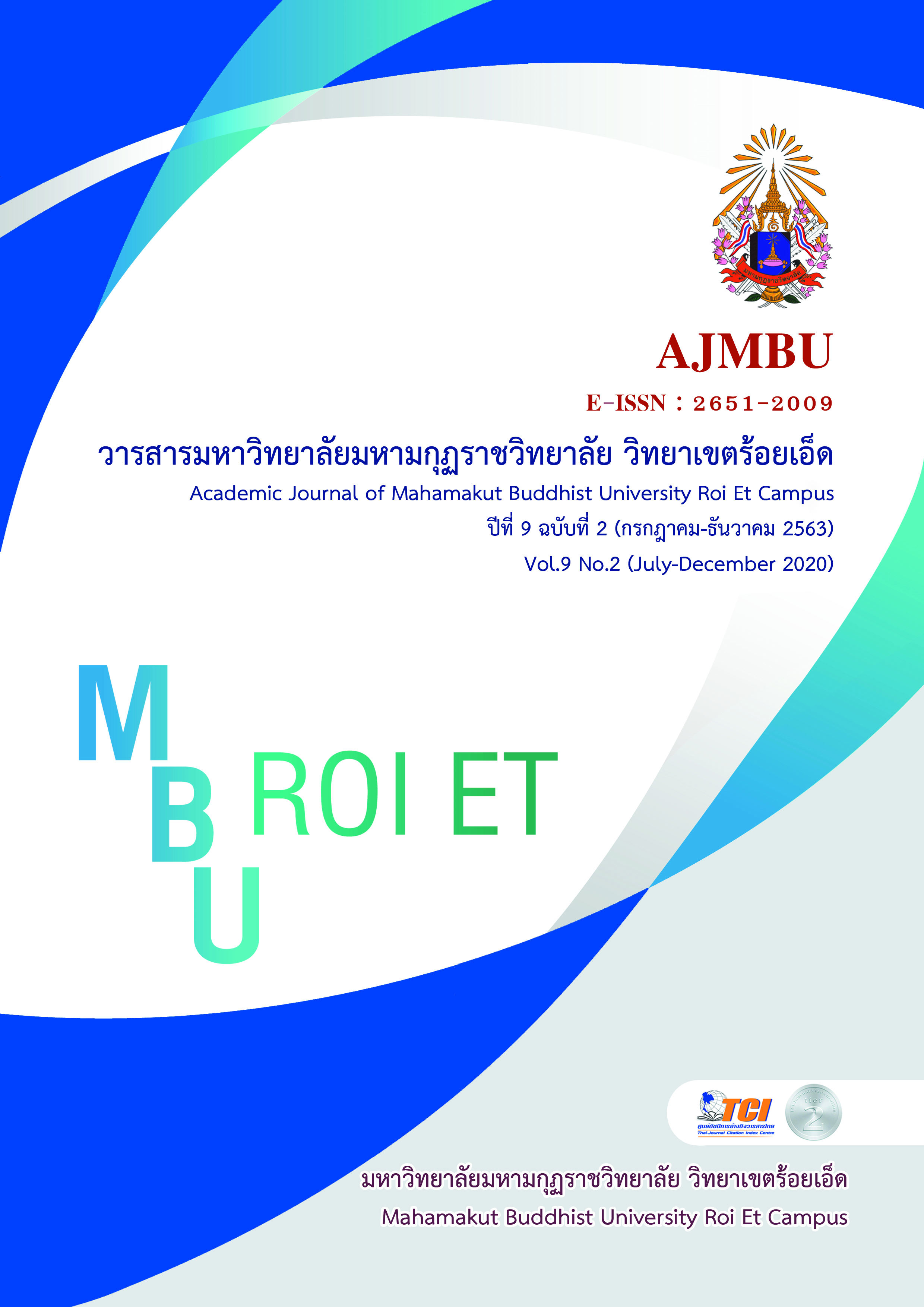Residents’ Participation in Drawing up Strategic Plans of Tambon Selaphum Municipality in Selaphum District, Roi Et Province
Main Article Content
Abstract
The objectives of the research article were to 1)study residents’ participation in drawing up strategic development plans of municipalities in Roi Et province’s Selaphum district, 2)compare their participation to varying variables of genders, ages and educational levels, and 3)examine guideline suggestions for enhancing their participation. Sampling groups employed for the quantitative method numbered 104 selected subjects related to Taro Yamane’s table, acting as a panel for developing municipalities, a panel for drawing up plans, a panel for scrutinizing and assessing strategic development plans. The device for eliciting quantitative data was the five-rating-scale questionnaire with all questions in the entire entry possessing reliability at .98. Data were processed with the computer software package. Statistics used for processing data comprised: frequencies, percentages, means, standard deviations, t-tests and F-tests (One-way ANOVA). The device for qualitative data was twelve key informants’ in-depth interviews. Data were presented with the descriptive manner.
The study results were found that: 1) Residents’ participation in drawing up strategic development plans has been rated ‘moderate’ in the overall aspect and each one. Means of all aspects in descending order are: preparing organizations for drawing up plans, implementing plans, drawing up strategic development plans, and supervising and assessing such plans. 2)Hypothesis testing results of their participation relative to varying variables of genders, ages and educational levels have overall shown no significant differences. 3)Residents’ guideline suggestions for stepping up their participation have been recommended in descending order of three frequencies. First, municipalities open up more opportunities to residents taking part in supervising and assessing plans. Next, the former let the latter participate in restoring their communal, societal, economic and educational orders. Then, the former allow the latter to play their roles in determining project development plans.
Article Details
References
เทิดศักดิ์ บัวสอน. (2557). การมีส่วนร่วมของประชาชนในการจัดทำแผนพัฒนาท้องถิ่นของเทศบาลตำบลจตุรพักตรพิมาน อำเภอจตุรพักตรพิมาน จังหวัดร้อยเอ็ด. สารนิพนธ์รัฐศาสตรมหาบัณฑิต สาขารัฐศาสตร์การปกครอง. บัณฑิตวิทยาลัย : มหาวิทยาลัยมหามกุฏราชวิทยาลัย.
ธัญญ์ณภัส นามภูงา. (2556). การมีส่วนร่วมของประชาชนในการจัดทำแผนพัฒนาเทศบาลตำบลหัวช้าง อำเภอจตุรพักตรพิมาน จังหวัดร้อยเอ็ด. สารนิพนธ์ศาสนศาสตรมหาบัณฑิต สาขารัฐศาสตร์การปกครอง. บัณฑิตวิทยาลัย : มหาวิทยาลัยมหามกุฏราชวิทยาลัย.
นิยม บุญคัมภ์ ผู้ให้สัมภาษณ์. 22 ตุลาคม 2561. ณ บ้านโนนสะอาด ตำบลพรสวรรค์ อำเภอเสลภูมิ จังหวัดร้อยเอ็ด.
บุญช่วย บูรณกิตติ ผู้ให้สัมภาษณ์. 20 ตุลาคม 2561. ณ บ้านโนนสะอาด ตำบลพรสวรรค์ อำเภอเสลภูมิ จังหวัดร้อยเอ็ด.
บูฆอรี ยีหมะ. (2555). การปกครองท้องถิ่นไทย. พิมพ์ครั้งที่ 2. กรุงเทพมหานคร : โรงพิมพ์แห่งจุฬาลงกรณ์มหาวิทยาลัย.
รัฐธรรมนูญแห่งราชอาณาจักรไทย. (2550). สืบค้นเมื่อ 12 ตุลาคม 2561. จาก https://www. ombudsman.go.th/10/documents/law/Constitution2550.pdf
แสงทอง เกศามา. (2537). การมีส่วนร่วมของคณะกรรมการชุมชนในการพัฒนาท้องถิ่นเทศบาลตำบลสุวรรณภูมิ อำเภอสุวรรณภูมิ จังหวัดร้อยเอ็ด. สารนิพนธ์ศาสนศาสตรมหาบัณฑิต สาขารัฐศาสตร์การปกครอง. บัณฑิตวิทยาลัย : มหาวิทยาลัยมหามกุฏราชวิทยาลัย.
อรทัย ก๊กผล. (2546). Best Practice ขององค์กรปกครองส่วนท้องถิ่นที่มีความเลิศด้านความโปร่งใสและการมีส่วนร่วมของประชาชน. นนทบุรี : คลังวิทยา.


